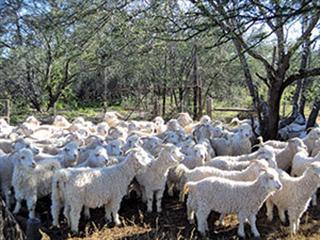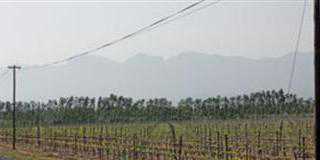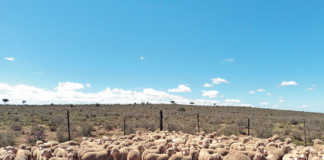
The best way to ensure your flock is doing well is to check it as often as possible – which is every day if you’re a small-scale farmer. You lose money if even a single goat has a treatable problem. The goat’s productivity is affected and the flock average comes down. In our series on ‘Getting started with goats’, we stressed the importance of nutrition for growth, production, fertility and health. In fact, in the drier parts of South Africa, or any area where feed is scarce, it’s fair to say that feeding is more important than breeding.
It’s no good spending money on genetic upgrades to your flock if animals cannot be fed to perform to their potential. Experienced farmers know that the master’s eye fattens the flock. In this issue we’ll take a closer look at a few general animal husbandry principles and how they apply to goat farming.
Trouble spotting
You can spot problems from a distance by studying the general appearance of the flock as the animals browse in the veld. Look for individual animals behaving out of the pattern. For example:
- If one (or more) of the animals stops to scratch itself with its horns or to rub against fence posts or trees, this is a sign of serious lice infestation which must be treated.
- Goats, especially kids, with lameness usually have ticks or thorns in their hooves.
- Animals that lag behind, often with drooping heads, could be ill.
- If the flock generally looks a bit thin there may be problems with the water supply. (Checking pumps, pipes, troughs and reservoirs should be a top priority.)
- If younger animals especially have faeces under their tails they may have internal parasites.
- Bring the flock in for closer inspection if you observe any one of these signs.
In the kraal
Once brought in, give each animal a quick once-over, like a sergeant major inspecting his men.
- Look for swollen udders in ewes. This could be caused by an injury or by the loss of a kid. If the kid has been killed by a predator, expect further losses if the flock isn’t removed from that camp or the predator isn’t found.
- Kids that look unwell may have lost their mothers or may not be getting enough milk.
- Pay special attention to the rams and check for ticks on their reproductive organs.
- In the case of Angoras, make sure the fleeces are clean. If there’s any seed contamination, move the goats to a seed-free camp.
Handling
The way you handle your flock is important. Don’t manhandle them. This is especially important in pregnant ewes. Work them quietly and gently into a well-constructed pen or race with no loose wires or protruding fence poles. Never bunch animals in holding pens too small for them; don’t force them through narrow gates where they could break legs; and never leave them standing in a pen or on a lorry without shade on a sweltering summer’s day.
Don’t herd goats during the hot part of the day. It’s best to wait for the afternoon breeze to come up. A good time to bring goats in from the veld for inspection is in the early morning before the heat starts. However, Angora goats with long hair shouldn’t be disturbed before the dew has evaporated, as chasing them through wet veld will stain the clip and reduce its value.
Flock counts
Count each age and sex group separately. Knowing exactly how many old ewes, mature ewes, young ewes, kids, kapaters and rams you have at any given time will help you plan. You’ll know how much surplus stock to market and how many replacement ewes and rams will be needed for the next season.
Parasite control
If tick infestation is minimal it can quickly be treated by touching individual ticks with a thin paint brush dipped into a suitable insecticide. If the problem is more widespread, the animals can be treated with a pour-on product, or plunge-dipped. The best remedy for lice is to plunge-dip the whole flock, even if only a few animals appear to be affected. Plunge-dipping will stop the spread of the infestation. Internal parasites can be treated with prescribed worm remedies, but remember to give these at the correct dose per bodyweight.
Roelof Bezuidenhout is a freelance journalist specialising in agriculture, and a fourth-generation Karoo small-stock farmer, who runs Merino and Dorper sheep and Angora goats.












